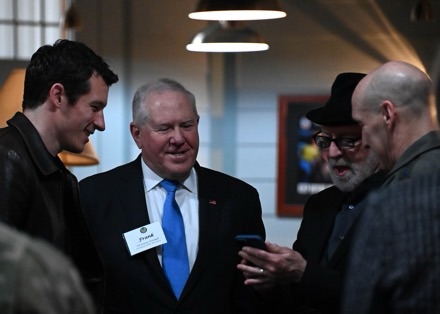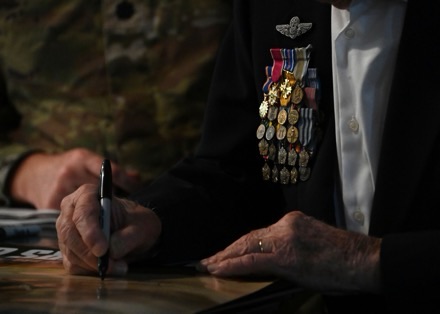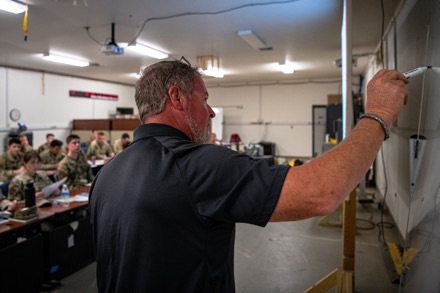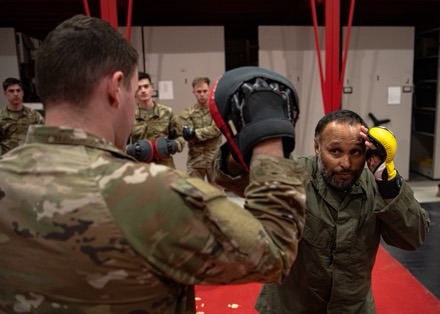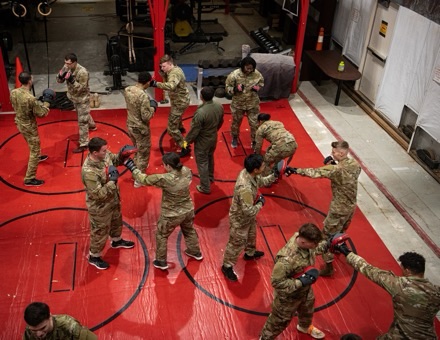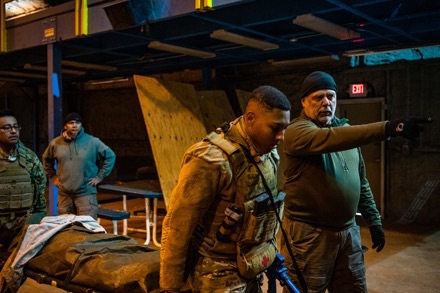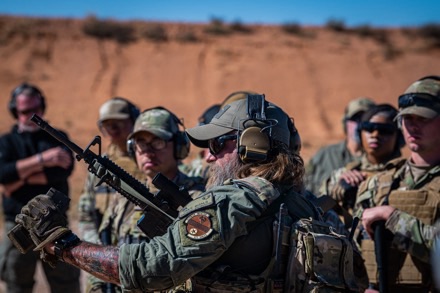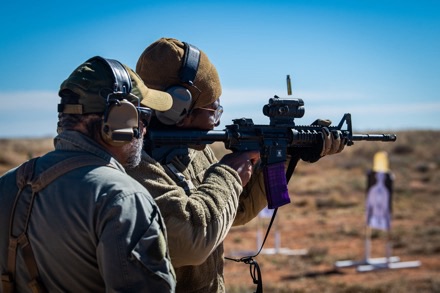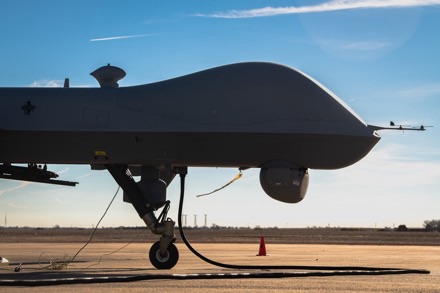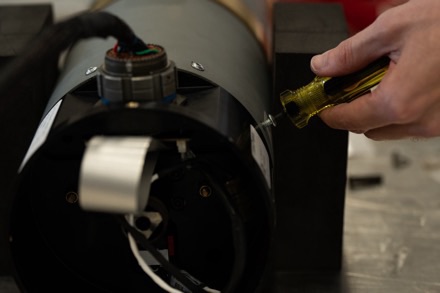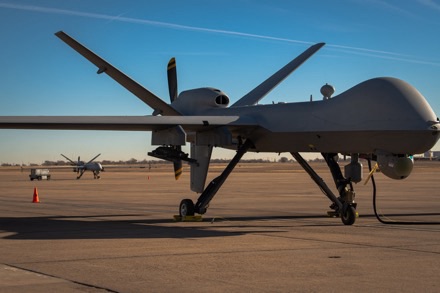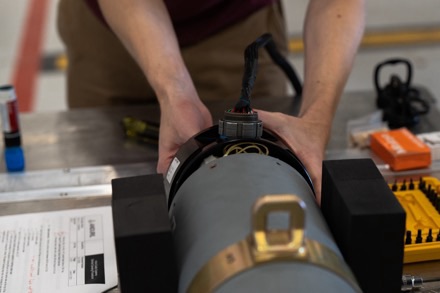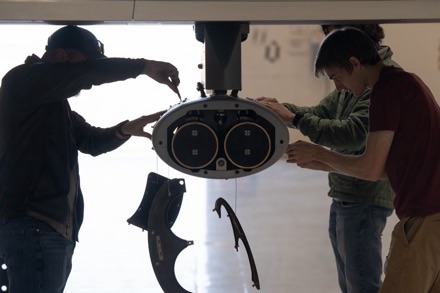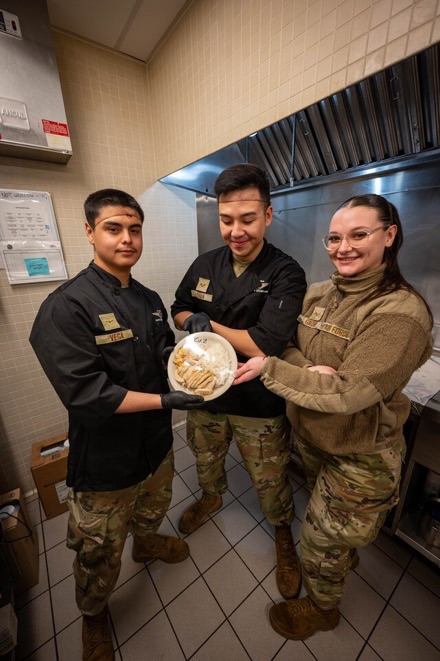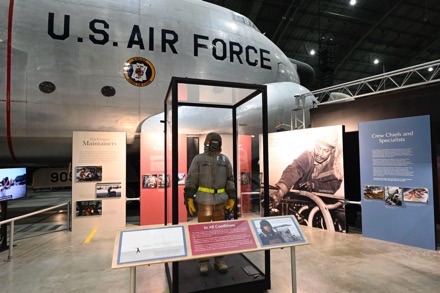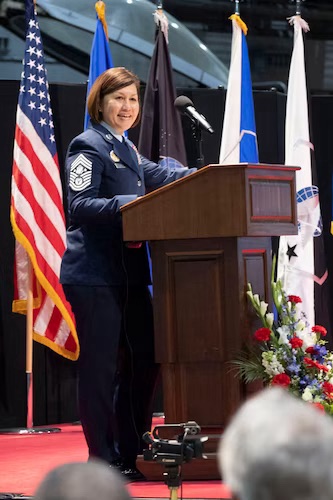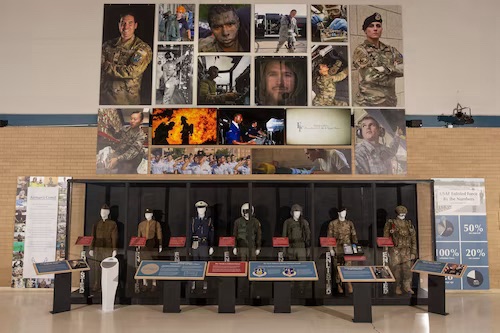The 805th Combat Training Squadron, also known as the Shadow Operations Center – Nellis, executed their annual Capstone event by experimenting with and developing tactics, techniques, and procedures for integrated two-way kill-chain automation between the operational and tactical command and control including battle management levels, to create competitive advantages for the United States and its allies and partners at Nellis Air Force Base, Nevada.
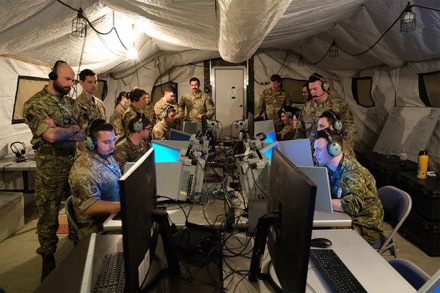
As the United States Air Force’s lead Advanced Battle Management System Battle Lab, the ShOC-N (a.k.a. the Rhinos) experiments and assesses emerging concepts, applications, and technologies, as well as develops TTPs for the Multi-Domain Operations Center of the future. During the five-day Capstone event, the Battle Lab executed a constructive large-force employment, using data generated organically within the ShOC-N’s modeling & simulation environment, to improve dynamic targeting kill-chain automation through software integration and associated TTP development.
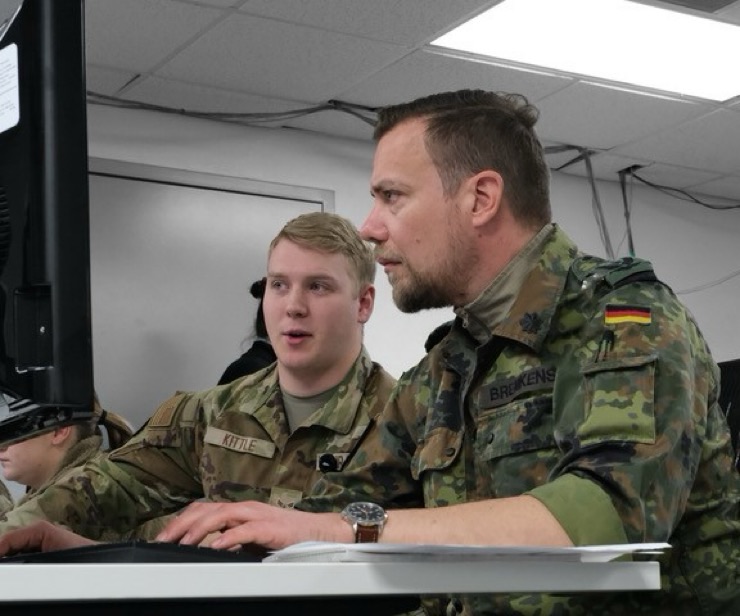
“During the Capstone event in 2022, the ShOC-N proved it was possible to quantify, observe, and measure command and control; the idea of measuring C2 has been overlooked in the past because of the misconception that ‘C2 is an art’. Human judgment will continue to play a critical role, but we’re proving C2 decision making is far more science than art,” said Col. Jonathan Zall, Department of the Air Force ABMS Cross Functional Team. “The Rhinos are taking the lead to correct the oversights of the past. They’re developing and conducting crucial scientific C2 experiments.”
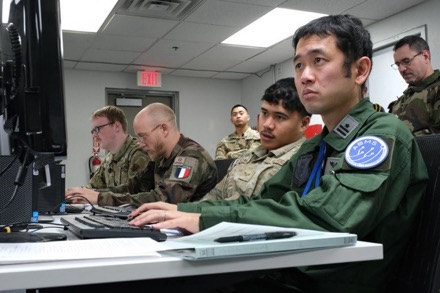
Zall continued, discussing the 2023 Capstone event. “The ShOC is an incredibly professional class act, disciplined ensuring the data is credible, not just if they like the toys, but how the tools perform, and they are measuring those things. That is why I am genuinely impressed with the Rhinos, with everyone coming in and all the TDY support and everything that has been achieved.”
This year’s event featured independent but related experiments influenced by Indo-Pacific Command tactics that were identified and selected by the Command, Control, and Communications Battle Management, or C3BM, Operational Response Team, DAF, Air Combat Command, and Pacific Air Forces. Experiments included:
1 Dynamic Targeting Kill Chain Automation
2 Connect the Five Eyes, or FVEY, Battle Labs, also known as the Combined Federated Battle Laboratories Network, or CFBLNet, to the ShOC-N
3 Transformational Modeling for Battle Management, or TM-BM
4 Digital Battle Management Node, also known as Tactical Operations Center – Light, and Mobile Solutions
“The ShOC-N doubled the number of experiments this year and primarily focused on the scientific rigor needed for data collection and analysis in order to provide data-driven insights for new prototypes or processes,” said Lt. Col. John Ohlund, 805th CTS/ShOC-N commander.
The Dynamic Targeting Kill Chain Automation experiments utilized tools focused on increasing the speed, scale and accuracy of the find, fix, track, target and engage, or F2T2E, process for PACAF’s experiment while also supporting ACC’s NEXUS integration efforts.
The ShOC-N modeled and replicated PACAF’s current operational- to tactical-level systems and processes, allowing for the secure experimentation of two new dynamic targeting kill-chain automation technologies.
The ShOC-N hosted personnel from across the DAF, industry, and coalition partners for the experiment. Data collection and analytics measured speed, scale, and accuracy during the experiments.
The ABMS CFT’s experiment objectives focused on procuring data through connecting FVEY Battle Labs/CFBLNet, TM-BM, and data capture and debrief tools.
Japan Self-Defense Forces, German and French Armed Forces, along with FVEY New Zealand Defence Forces, and United States Air Force Weapons School students participated in the TM-BM artificial intelligence-enabled technology experiment known as “Match Effectors,” or the decision to appropriately pair effectors with targets while taking into consideration many factors. The experiment observed two groups of participants one using one operating system’s software and a control group using a different operating system’s software to compare the effect of human-machine-team decision speed, quality, and human confidence in HMT solutions.
The United Kingdom and Canada were the first coalition partners to integrate into the ABMS Battle Lab, allowing them to connect and participate in the TM-BM experiment. The ShOC-N is currently working with Australia and New Zealand to connect their Battle Labs. The two FVEY Battle Labs used the CFBLNet enclaves to establish a releasable, or REL, environment allowing the exchange of mission-related files, simulation data, and voice/chat/data link messages, providing the initial validation for the United Kingdom and Canada to host future combined C2 experiments.
“This new capability provides our coalition partners access to the Battle Lab as if they’re physically on the operations floor, allowing our partners to fully participate in CJADC2 [Combined Joint All-Domain Command and Control] and ABMS exercises and experiments,” said Jeffery Compoc, 805th CTS/ShOC-N chief technical officer.
During the final ABMS CFT experiment, the simultaneous effectiveness of four data capture and debrief tools that support C2 were assessed. The experiment compared the type of data collected, quality of measurements, and display between the four applications.
“Watching the TM-BM and dynamic targeting experiments was like holding a prism into the light to reveal distinct decision categories, like the prism reveals the distinct colors of the rainbow,” said Zall. “We [ABMS CFT] eventually wanted to get to experiments where we combined different decisions, but there were concerns the more decisions we put together that each little decision might be lost in the chaos, but now we know that we can do these combined decision experiments because the Rhinos just did it and they’ve been doing it all week. Since the Rhinos are so methodical with collecting data, we can use it like it was our own experiment. All we have to do is apply the model and pull the insights from the data.”
Throughout the Capstone event, the TOC-L, now known as the TOC-enabled Control Reporting Center, or CRC, team executed tactical C2 primarily from the TOC kit in a tent outside the ShOC-N. The TOC family of systems provides a tailorable Battle Management C2 center that scales up or down based on the Component Commander’s needs. The TOC kit is a mobile ground based tactical BMC2 capability used to conduct BM functions within a CRC or Air Support Operations Center. The ShOC’s dynamic targeting and M&S cells sent data to the TOC enabled CRC for use within the common operational picture display and target prosecution. The experiment analyzed the operational speed of data exchange utilizing experimental software and traditional crews executing the target process.
The ShOC-N deployed Wi-Fi on the combat operations floor for the first time, allowing mobile solutions for C2 warriors. The Rhinos, in partnership with the C3BM ORT office utilized ORT’s Mobile Solution tablets employing Commercial Solutions for Classified, or CfSC, infrastructure during the Capstone event.
“The mobile solutions experiment allowed operators to move freely on the operations floor and maintain communications and situational awareness of the operations, while the ShOC-N analyzed battle-management data, instrumentation network metrics, and experimentation on the influence for the kill-chain execution,” said Compoc.
“The partnership between the C3BM Operational Response Team’s Mobile Solutions/CfSC prototype and the 2023 ShOC-N Capstone event provided battle management operators with a hands-on experience of what mobile C2 could look like in an ACE CONOP [Agile Combat Employment concept of operations] environment,” said Capt. Shane Toner, DAF C3BM ORT program manager. “C3BM collected user feedback of the operator experience while replicating the battle management functions of operator workstations on the ShOC-N operations floor that will influence CSfC capability and End User Device form factors for the future DAF Battle Network.”
Toner continued, the use of CSfC End User Devices can reshape thinking around operations floor physical layouts, the ability to collaborate and generate teaming environments, and the DAF’s ability to conduct mobile C2 in a wireless fashion. ShOC-N Capstone provided a key venue for the development of C3BM ORT’s plans for the Mobile Solutions prototype and the team looks forward to supporting the ShOC-N in 2024.
“What we are seeing here [at the ShOC-N] is 90% ingenuity and grit and 10% resourcing, so one of my messages back to my bosses and anyone who will listen is, now just imagine what these folks could do with more resources? And you can trust them to be good stewards of resourcing because they have already proved it,” said Zall.
The ShOC-N’s mission is to provide an environment for the DAF to make rapid acquisition decisions, provide data-driven requirements, and distribute warfighter feedback to the industry to drive information advantage and decision superiority against current DOD pacing challenges.
“The ShOC team is excited for 2024 and the continued experimentation with the Secretary of the Air Force’s Operational Imperative team for ABMS and CJADC2. Our goal is more experiments, potentially smaller and more frequent, and culminating in an annual Capstone,” said Ohlund.
Deb Henley
505th Command and Control Wing
Public Affairs
